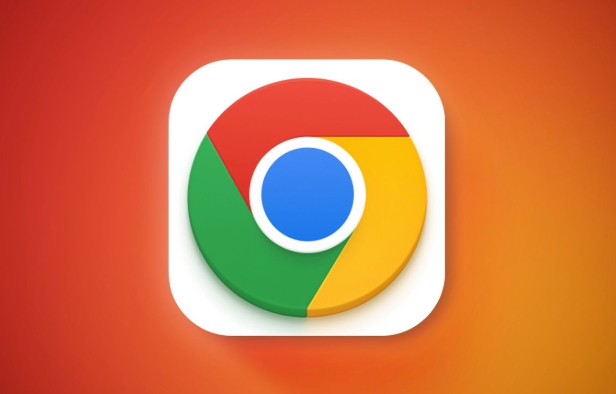How to view chrome incognito history?
Chrome's incognito browsing history cannot be viewed directly, but it can be obtained indirectly through three methods. 1. Use the command line tool to view the DNS cache, which can only obtain some domain name information and is not durable; 2. Check the router or network monitoring log, which requires a certain network knowledge and depends on network settings; 3. Install third-party monitoring tools and configure in advance to record invisible browsing behavior. Overall, the invisibility mode is designed to protect privacy. All the above methods have limitations. It is recommended to choose whether to use monitoring methods based on actual needs.

The original intention of Chrome's Incognito Mode is to not leave a browsing record, so under normal circumstances, you cannot see the incognito history directly in the browser. But if you really want to know which websites you visited during an invisible browsing, it is not completely impossible, you just need to think about the operation.

1. Use the command line tool to view the DNS cache
If you are browsing in Chrome invisible mode on your computer, you can try to view some of the visited website domain names through the system's own command line tools.

- Open a command prompt (Windows: Win R → Enter
cmd; Mac can use a terminal) - Enter
ipconfig /displaydns(only Windows supports this command) - View the domain name information in the output content
This method can only see the domain names of some websites, and cannot restore the complete browsing history, and it will disappear after refreshing the cache. It is suitable for temporary emergency checking whether you have visited a specific website.
2. Check the router or network monitoring log
If you are connected to a home network or a corporate network, you may be able to see the URL you accessed through your router or network management software.

- Log in to the router background (the general address is
192.168.0.1or192.168.1.1) - Find "Access Log" or "Internet Record" functions
- Filter out data during invisible browsing based on time
This method is a bit complicated for ordinary users and requires a certain amount of network knowledge, and it depends on whether the network you are using is enabled for relevant recording functions.
3. Install third-party monitoring tools (set up in advance)
If you want to track invisible browsing behavior for a long time, you can install some software on your computer that has web filtering and recording functions, such as:
- K9 Web Protection
- Net Nanny
- OpenDNS
These tools record all network requests at the system level, including websites opened in the Invisible Window. However, such software usually requires installation and configuration in advance, and there is no way to retrieve the historical record after installation .
Basically, these are the ways to find traces of invisible browsing. After all, Invisibility Mode is for privacy protection, so don't expect to be as easy as normal history. If you really need to record, it is recommended not to use stealth mode or prepare for monitoring in advance.
The above is the detailed content of How to view chrome incognito history?. For more information, please follow other related articles on the PHP Chinese website!

Hot AI Tools

Undress AI Tool
Undress images for free

Undresser.AI Undress
AI-powered app for creating realistic nude photos

AI Clothes Remover
Online AI tool for removing clothes from photos.

Clothoff.io
AI clothes remover

Video Face Swap
Swap faces in any video effortlessly with our completely free AI face swap tool!

Hot Article

Hot Tools

Notepad++7.3.1
Easy-to-use and free code editor

SublimeText3 Chinese version
Chinese version, very easy to use

Zend Studio 13.0.1
Powerful PHP integrated development environment

Dreamweaver CS6
Visual web development tools

SublimeText3 Mac version
God-level code editing software (SublimeText3)
 How to install Chrome extensions on mobile (Kiwi, etc.)
Jul 11, 2025 am 12:50 AM
How to install Chrome extensions on mobile (Kiwi, etc.)
Jul 11, 2025 am 12:50 AM
Android phones can install Chrome extensions through KiwiBrowser. KiwiBrowser is an open source browser based on Chromium on the Android side. It supports the installation of the Chrome Web Store extension. The process is: Open Kiwi and enter the Chrome store, search for extensions, and click "Add to Chrome" to complete the installation; when using it, you need to pay attention to network stability, extension compatibility, permission granting and installation quantity; other alternatives include FirefoxMobile and YandexBrowser, but Kiwi is still the most stable and convenient choice at present.
 What firewall ports does Chrome Remote Desktop use
Jul 13, 2025 am 12:43 AM
What firewall ports does Chrome Remote Desktop use
Jul 13, 2025 am 12:43 AM
ChromeRemoteDesktopusesport443(HTTPS)astheprimaryportforsecureconnections,andoccasionallyport80(HTTP)asafallback.ItalsoleveragesSTUN,TURN,andICEprotocolstoestablishpeer-to-peerconnections,withTURNactingasarelayifdirectconnectionsfail.Toensuresmoothop
 How to change the user agent string in Safari without extensions?
Jul 11, 2025 am 12:48 AM
How to change the user agent string in Safari without extensions?
Jul 11, 2025 am 12:48 AM
On macOS, you can modify Safari's UserAgent through developer tools or terminals, but iOS/iPadOS does not support it. The specific methods are: 1. Use the developer tools to modify temporarily: select preset UA after enabling the development menu; 2. Permanent modification through the terminal: enter the command to write a custom UA; 3. iOS/iPadOS cannot be modified directly, and it needs to rely on a third-party application or browser.
 How to view chrome incognito history?
Jul 09, 2025 am 12:31 AM
How to view chrome incognito history?
Jul 09, 2025 am 12:31 AM
Chrome's incognito browsing history cannot be viewed directly, but it can be obtained indirectly through three methods. 1. Use command line tools to view the DNS cache, which can only obtain some domain name information and is not durable; 2. Check the router or network monitoring log, which requires certain network knowledge and depends on network settings; 3. Install third-party monitoring tools and configure in advance to record invisible browsing behavior. Overall, the invisibility mode is designed to protect privacy. All the above methods have limitations. It is recommended to choose whether to use monitoring methods based on actual needs.
 How to simulate different timezones in Chrome
Jul 13, 2025 am 12:19 AM
How to simulate different timezones in Chrome
Jul 13, 2025 am 12:19 AM
To test page behavior in different time zones in Chrome, there are three ways to do it. 1. Use ChromeDevTools to simulate the time zone: Open DevTools → Click on three points → MoreTools → Sensors, check the overlay option in the DateandTime section and select the target time zone. This setting only takes effect in the current session; 2. Specify the time zone through the command line startup parameters: close all Chrome instances and execute chrome.exe--timezone="target time zone" to affect the entire browser instance; 3. Use JavaScript to overwrite the behavior of the Date object, and the fixed time value is used to accurately control the JS time.
 How to stop Microsoft Edge from running in the background
Jul 16, 2025 am 12:34 AM
How to stop Microsoft Edge from running in the background
Jul 16, 2025 am 12:34 AM
There are four ways to turn off Microsoft Edge backend running. 1. Disable background running in Edge settings: Go to "Settings" → "System" and turn off the "Run Microsoft Edge in the background" option. 2. Close Edge in Windows startup item: Through the "Startup" tab of Task Manager, right-click Edge and select "Disable". 3. Modify the group policy or registry: Advanced users can create BackgroundModeEnabled registry key and set it to 0, or use the official group policy template. It is recommended to back up the system before operation. 4. Use Task Manager to manually end the process: temporary emergency plan, press Ctrl Shift Esc to open the Task Manager to end all Es
 How to use the network inspector in Safari's developer tools?
Jul 12, 2025 am 12:17 AM
How to use the network inspector in Safari's developer tools?
Jul 12, 2025 am 12:17 AM
To open Safari's Network panel for network request debugging, please follow the following steps: 1. Open Safari → Preferences → Advanced → Check "Show the 'Development' menu in the menu bar"; 2. Open the landing page, click "Development" → "Show JavaScript Console" in the top menu bar (or use the shortcut key Option ⌘ C); 3. Click the "Network" tab in the developer tool interface to enter the network panel. After refreshing the page, you can view the Name, Status, Type, Size and Time information of all loaded resources, and support clicking to view details, filtering classification, sorting by time, and recording network behavior for performance analysis and optimization judgment.
 How to manage Chrome's component updates
Jul 16, 2025 am 12:02 AM
How to manage Chrome's component updates
Jul 16, 2025 am 12:02 AM
Chrome allows for the management of automatic update components in a variety of ways. First, you can enter chrome://components/ in the address bar to manually check and update built-in modules such as Flash and PDF readers; secondly, advanced users can disable automatic updates of specific components through group policies or configuration files for enterprise environments; finally, you can use ad blocking extensions or scripting tools to reduce interference with update prompts. The above method can help users control the update rhythm on demand while taking into account security and user experience.







